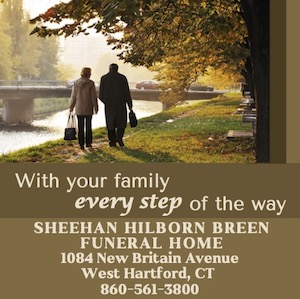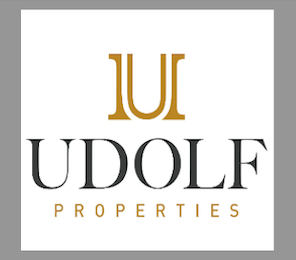By Bob Liftig ~
If you consider yourself a descendant of colonial Christian lineage, you would not be surprised to see surnames in your family tree like: Pierce, Van Leeks, Raymond, Jessup, Betts, Campbell, McDonough, Ferguson, Gardner, Bennett, Smith, Swift, Tilton, and Mooney. And you would not be surprised to discover that their descendants – your cousins – were associated with important events in American history and by now are scattered from sea to shining sea. They fought in the Revolution; plowed the prairies with the early pioneers; rushed the gold fields of California in the time of the “Forty Niners,” rode the wagon trains west on the Oregon Trail, paddled “les pirogues” through the bayous of Alabama, strolled the spacious grounds of Ante-Bellum plantations, or even fought for Jefferson Davis.
They all were Christians, you assume: What else was there?
Answer: They might have been Jews.
Ten generations of descendants of a Connecticut family named “Judah” were in all the places above and witnessed or participated in all of the historical events; and if you descend from any of these proud old families, you are directly related to the “Judah” family – which means “Jew” in almost any language.
The “Jewish Mayflower,” the “St. Charles,” pulled into a dock near present day Wall Street back in 1654, debarking its 23 Sephardic refugees into a village called New Amsterdam (today, New York City). The St. Charles had sailed from Recife, Brazil, its passengers in a desperate flight from the Inquisition that had followed them across the Atlantic from Portugal, after Brazil was wrested from the Dutch.
These Jewish “Pilgrims” were not exactly welcomed by the Governor, Peter Stuyvesant, who ruled Manhattan with one peg leg, an iron fist, notable prejudice – and a strong belief that 23 Jewish immigrants – even if they were officially his countrymen – would just be 23 too much. Stuyvesant tried his damnedest to get rid
of the Jews, but they appealed to his masters in Holland, and he was reprimanded. Jews were good for business, his bosses said, and – like it or not – he was stuck with them.
The Jews remained in Manhattan and so did the governor (He’s still there — his tomb at St. Mark’s on the Bowery was vandalized in the 1960s and his skull used for soccer practice) and Stuyvesant’s failure to remove them resulted in the largest Jewish population in the world outside of Israel. (Ten years later, in 1664, Stuyvesant failed again, when he had to surrender his colony to the English – resulting in his town re-named as the City of New York)
The Jews of New Amsterdam were not the first Jews to set foot in North America, however, nor were they the first to want to settle here. In 1649, the merchant Solomon Franco landed in Boston with supplies for the militia of Massachusetts, and, liking the area very much, decided to stay there. Then the General Court discovered his origins and officially gave him the boot – and a one-way ticket back to Holland with the first ship that would take him there.
Then, in 1654, just before the “Other Mayflower” landed, one Solomon Pietersen, a Jew of Holland slipped into Manhattan before even Stuyvesant could notice him, married an unnamed Dutch woman, made sure he had their daughter Anna baptized as soon as he could – and earned for himself the title of “First Jew To Come To America And Not Be Thrown Back Into The Ocean.”

Brig. Gen. Henry Moses Judah, who had ties to Westport, had an illustrious record fighting for the Union in the Civil War. Judah and other members of his family are buried in Kings Highway Cemetery
The Sephardim who appeared in New Amsterdam just after Pietersen, on the other hand, did not want their children to be baptized, or to intermarry, or to turn around immediately and – Wandering Jew-like – sail away again. They decided to settle in, settle down, and settle for nothing less than their own congregation – Shearith Israel, founded in 1655: the first Jewish congregation to hold services in America.
In the 18th Century, more Jews arrived to join the descendants of the original Jewish “Pilgrims,” among them, Baruch Judah (in 1715), who presumably brought over his relative, Rabbi David Judah, from England;
Rabbi David arrived in New York City by 1750, and, like Pietersen, quickly married a “chistian women,” (sic) and, perhaps because of estrangement, moved with his wife and son – also named David – to Connecticut, where he began both his own prolific family and a famous line of descendants.
From David’s line alone, his descendants included: Michael Judah, a pre-Revolutionary merchant in Fairfield; David Judah, a Revolutionary War soldier in Captain Gregory’s Company in the Connecticut Line; the Reverend Henry Raymond Judah of the Episcopal Church in Fairfield: Henry R. Judah, an early graduate of Columbia University; Henry Moses Judah, a West Point graduate and classmate of Ulysses S. Grant, a hero of the Mexican War, and a Brigadier General in the Civil War who whipped the forces of the Confederate General Morgan; and Theodore Dehon Judah, one of the engineers who designed America’s first transcontinental railroad.
While intermarriage in colonial days may have been a source of local interest, there is hardly a record of this, and it did not appear to initially result in the abandonment of either religious tradition. As Jacob R. Markus has written in his volume, “Early American Jewry,” “conversion through default” – especially in colonial rural areas where there were no Jewish communities (which, of course, defined most of what was America), was a common and practical necessity.
There was need for some adjustment, however, as can be shown by what we do know about Connecticut Michael’s family. His own son Michael married Martha Raymond – of the Old Yankee Raymond family of Norwalk – and Michael named his first son Michael – but brought him to a “Mr. Abrahams”, a “mohel” in
New York City, and had him circumcised. Michael had “kept the faith” – not only by bringing his son to the “mohel,” but by keeping kosher the rest of his life: at
his death, he left what his executor called a “killer knife” for the purpose of ritual butchering.
Conversion by default also did little to cut off Jewish–to-Jewish business, family and cultural ties. When Loyalist fever gripped New York and Revolutionary fervor spread across New England, many New York Jewish families with Revolutionary minds, such as the Myers’, the Mearses, and the Simsons, headed for the Connecticut border to settle in more “patriotic” places – like Norwalk. There they were greeted warmly by none other than Michael Judah, now a Connecticut Yankee “old timer.”
When the elder Michael died in 1786, he left his son Michael only five pounds sterling, and the rest of his estate to Shearith Israel in New York – where he is buried – and to the Jewish widows and orphans of that city. Considering that Michael’s wealth was recorded at over 1,000 pounds at the start of the Revolution, the lack of generosity toward his son could be significant. Was the elder Michael angry that Michael Jr. was following his mother’s Christianity and not his own – but somewhat distant – religion; or had Michael Sr. rejected his son for other reasons?
Or had Michael not rejected his son at all? Was he simply impoverished by the currency inflation at the end of the Revolution, like so many other American patriots? (One of Michael’s debtors paid for his New York burial) His poor wife Martha Raymond Judah died before him.
The picture that emerges from these and other families of American default conversion is not unflattering to early Christian Americans. After the Puritans and Peter Stuyvesant showed their colors, it is hard to find evidence of significant colonial anti-Semitism. Jewish communities were welcomed in all of the major cities by the time of the Revolution. “Default conversion,” assimilation, and eventual absorption into the Christian community was not uncommon, and intermarried couples who were willing to adjust do not seem to have been shunned by their relatives.
The Jewish population by the time of the Revolution was truly miniscule: barely 3,000 Jews in the general population of over two million. By the Civil War, their numbers had grown to 200,000 (boosted by an estimated 50,000 German refugees). The 2,000,000 Eastern Eastern European Jews had yet to get here. By 1920, the Jewish population was estimated at three million – just about half of today’s.
Though the number of American Jews has increased dramatically over the last 200 years, the percentage of Jews in America has fallen. How much of the decrease is due to decreased family sizes, how much to increased immigration of other religionists, or how much to the 50% intermarriage rate of the post-WWII era, is a matter of interest to many researchers – though few of them have considered the impact of “default conversion” by the descendants of early Jewish settlers.
To imagine this impact, we might draw some parallels to another of the founding North American populations: the French Canadians. The Province of Quebec was officially French from 1608 to 1759 – roughly the same number of years – 150 – between the arrival of the Jewish Mayflower and the American Revolution. Only about 8,500 settlers ever arrived from France, yet today there are over 6,000,000 Quebecois, 1,000,000 originally from Quebec who live in other Canadian provinces, 2.4 million U.S. citizens who identify themselves as “French Canadian,” and 8.4 million other Americans who claim French ancestry – a total of 17.8 million.
If the same rate of increase is applied to Jewish colonial propagation (and that’s admittedly an iffy proposition), the 3,000 early Jewish immigrants could have produced as many as 7.3 million descendants. Add to that the 50,000 who came from Germany in the middle of the 19th century, and the 2,000,000 who arrived from Eastern Europe between 1890 and 1920, and the total is 10 million Jews who should be living in America today-and that’s assuming none of the Jewish immigrants arriving after 1776 produced any other than simply “replacement” children. As underestimated as these numbers might be, there must be at least 4 million part-Jewish descendants of colonial Americans who have simply “gone missing” – off the radar, it seems.
Or have they?
Four hundred years without a Holocaust has probably resulted in millions of Americans descended in part from early Jewish immigrants. With church and synagogue records largely intact on this side of the Atlantic, and with most of them posted on the Internet, many “mainstream” American Christian families searching their family trees could find that, in addition to descending from the Pilgrims of Massachussetts, they also will find their origins in the House of Israel.
*(The spelling of “Judah” has morphed over the years into variants such as: Juda, Tschudi, Chudy, and Judy. For example, “Judy Point” on Long Island Sound in Westport is one of the early sites of Judah family settlement.)
Dr. Robert A.Liftig is an adjunct professor in the Applied Ethics Department of Fairfield University. His writing has been published in The New York Times, Westport Magazine and other publications. He is the editor of The Journal of the Empire State Administrators and Supervisors Association.








 Southern New England Jewish Ledger
Southern New England Jewish Ledger











